Dripping in sweat on my local climb, I went in search of cooling strategies to make the heat more bearable
Soaring temperatures are adding an extra challenge to our cycling - nutritionist and author Anita Bean explores how can you mitigate the effects, stay cool and keep pressing hard on the pedals
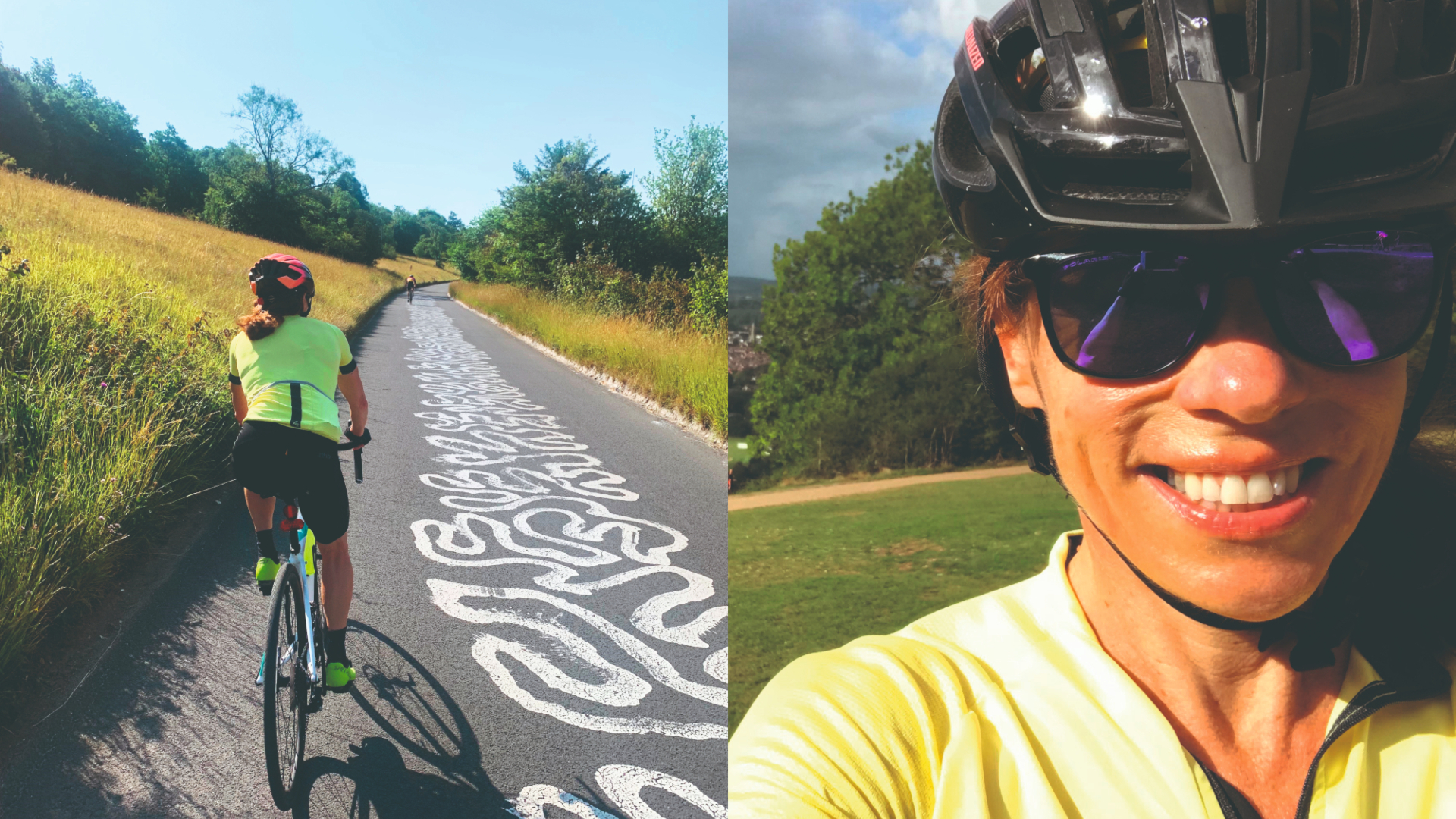
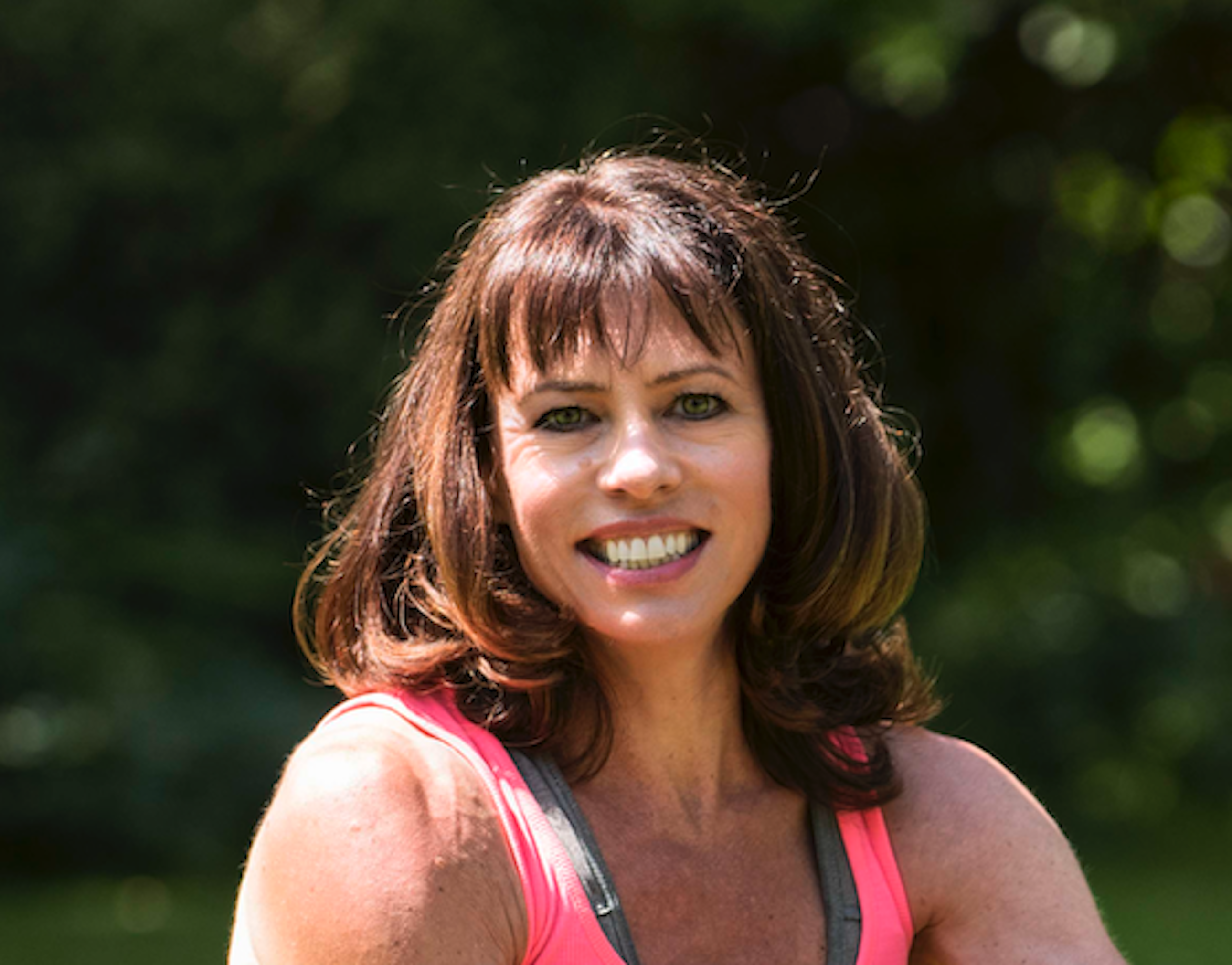
Only halfway up Box Hill (Surrey, UK) and my heart rate is already through the roof. I’m dripping with sweat, struggling to maintain power and my legs feel like jelly. This familiar climb, usually hard but enjoyable, suddenly feels horribly gruelling – and the reason is, it’s 26ºC in the shade. If this is what it feels like climbing a Surrey hill in a British heatwave, how do riders in the Tour de France cope in the mountains where temperatures exceed 40ºC with 80% humidity?
To be able to climb heroically in the heat, you need to be efficient at shedding heat and replacing lost water – but how exactly? Could I get better at coping in the heat so that, in future summers, the Surrey Hills might feel less like Death Valley? To find out, I decided to investigate how the pros prepare for racing in the heat.
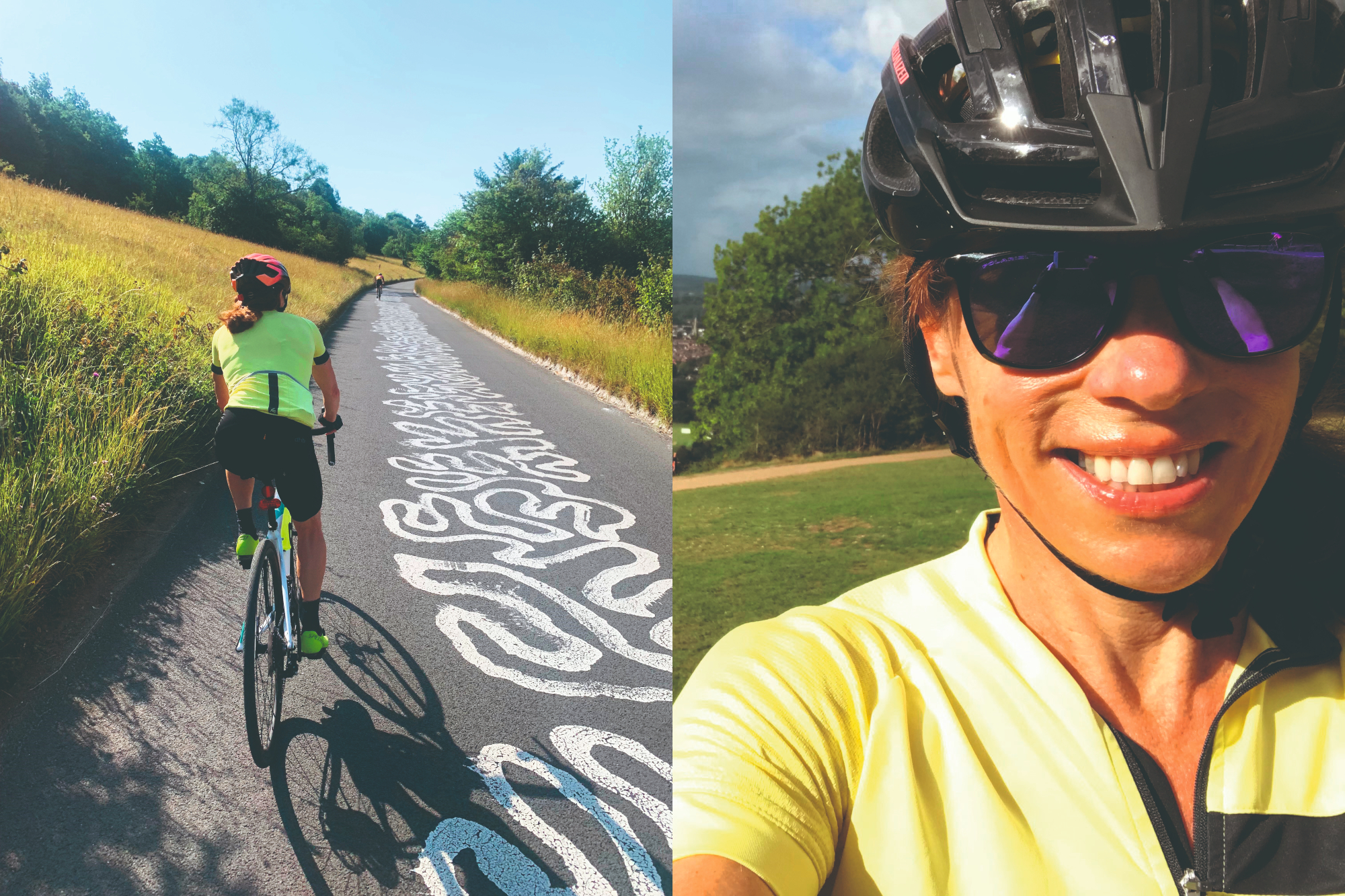

Anita Bean is an award-winning registered nutritionist, internationally published author, health writer and former British bodybuilding champion. She specialises in sport and exercise nutrition and is the author of The Complete Guide to Sports Nutrition and The Vegan Athlete’s Cookbook.
The fatigue and loss of power we experience during very warm weather rides is caused by two main factors: a rise in core body temperature and changes in our metabolism. “Both the exercise itself and the air temperature and humidity can increase your core body temperature, putting stress on your cardiovascular system,” explains Dr Lewis James, senior lecturer in nutrition at Loughborough University. “To help cool itself, your body sends more blood to the skin. This leaves less blood available for your muscles, and your heart has to work harder.”
Less water in your body effectively means less circulating blood. “Losing fluid in the form of sweat through the skin means blood volume decreases and your heart’s stroke volume [the amount of blood pumped out by each heartbeat] decreases,” continues James. “Your body burns through its glycogen store more quickly too, so exercise feels harder. You can tolerate heat and dehydration better if you’re fit, but if you keep getting warmer, it will at some point begin to reduce performance.”
The most effective method of getting rid of excess heat during exercise is sweating, whereby the moisture on the surface of your skin cools you down as it evaporates. For every one litre of sweat that evaporates, you will lose around 600kcal of heat energy from your body. “For most rides you’re likely losing 1-1.5 litres per hour, but in extreme heat and humidity, sweat losses can be as high as three or four litres per hour,” explains James.
Staying on top of your hydration on long rides helps, but when it comes to racing in the heat, drinking enough fluid to replace sweat losses isn’t always possible.
Dehydration difficulties
Hot weather cycling plus dehydration can lead to a drop in performance and, at worst, a dangerous rise in your core body temperature. If your body’s temperature exceeds 39ºC, you’re at risk of developing heat-related illness – heat stress, heat exhaustion and heatstroke – stated in ascending order of severity. Heat stress refers to mild to moderate discomfort: hot skin, profuse sweating, heat cramps, fast heartbeat and altered breathing pattern. Heat exhaustion is the result of prolonged heat stress: muscle weakness, fatigue, headaches, dizziness, nausea, vomiting and fainting. Heatstroke is the most dangerous of the three and can occur after heat stress or without prior notice. It is caused by an abnormally high core temperature and results in dry, hot skin, flushing, increased heart rate, altered mental state, and ultimately convulsions and loss of consciousness.
Get The Leadout Newsletter
The latest race content, interviews, features, reviews and expert buying guides, direct to your inbox!
“Generally, performance starts to decrease when you lose 2% of your body weight in fluid loss through sweating,” says James. “But that’s just an average, and it’s worth noting that many of the studies on hydration were done using indoor cycling, so may not apply accurately to outdoor cycling.” Some people tolerate dehydration better than others. “Our studies have shown there is huge variability between individuals,” explains James. “In some people, performance can drop from just 1% body weight loss; others are able to tolerate six or 7%.” What level of performance decline are we talking about? “At 2% body weight loss, you may see anywhere between zero and 20% drop in performance.”
Some coaches and scientists believe that tolerance to (moderate) dehydration is trainable. “For most endurance cyclists, a degree of dehydration tends to happen by default as they cannot drink enough to replace sweat losses,” says James. “Our research suggests that you can certainly learn to become more comfortable with dehydration and therefore tolerate it better in races.”
Cooling strategies
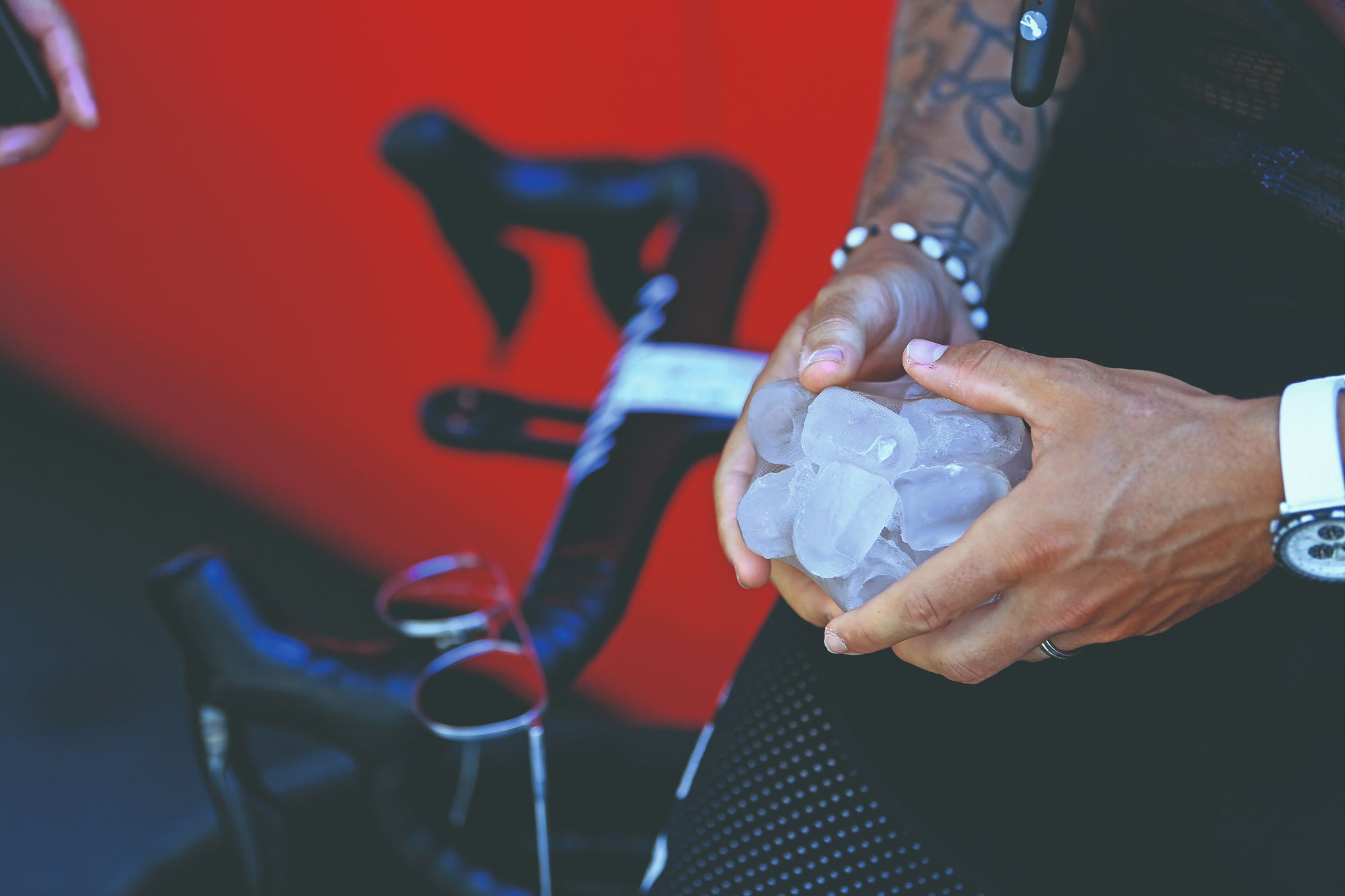
So heat is bad for our performance, but what can we do about it? One obvious strategy to make cycling in hot conditions more bearable is pacing and, specifically, not going too hard too soon in a race. But there are other cooling strategies that can help.
For example, staying in the shade or sipping ice-cold drinks in the build-up to the start will help pre-cool your body before a race and give you a bigger margin for core body temperature rise. Pros often make use of specially designed ‘cryovests’, ice baths or cold water immersion. On-the-bike options include pouring or spraying water over your head, stuffing ice cubes or a wet cold sponge inside your helmet (or even in your jersey) or drinking ice slurries.
One question I’ve always pondered is whether I’d cool myself more effectively by pouring the water in my bidon over my head or by drinking it. “If you’re cycling in a hot, dry environment and not at risk of dehydration, you may be better off pouring the water over your head, at least in small amounts,” says James. “Provided it evaporates, it’ll help cool you off and lower your core temperature. But if you’re in a hot, humid environment and sweat is dripping off you, you might be better off drinking it, since the water won’t evaporate off your skin and cool you down.”
If you know you’ll be racing in hot, humid conditions, heat adaptation training will help you perform. According to Dr Steve Faulkner, who as well as being a CW Fitness Project participant is senior lecturer in sports engineering at Notts Trent University, heat adaptation training is the single biggest thing you can do to prepare for a race in the heat.
“With heat exposure, your body learns to better regulate its core temperature, and the more stable it is, the better you’ll ride. Heat adaptation training increases your blood volume, which enhances your ability to sweat and thermoregulate.” The benefits are multiple. “It will lower your resting and exercise heart rate and core temperature. Heat adaptation training will reduce your risk of heat illness and maximise your performance.”
You can adapt yourself to the heat either by cycling overseas in a hot climate (heat acclimatisation) or by training in a simulated hot environment (heat acclimation), for example by wearing more clothing and hot water immersion. “Heat adaptation begins to happen in as little as four or five days but the longer you can do it, the better,” says Faulkner. According to a meta-analysis of 96 studies on the performance benefits from heat adaptation, 14 days is the minimum period required to stimulate effective adaptations – so it’s no good beginning your heat training a few days before your target race.
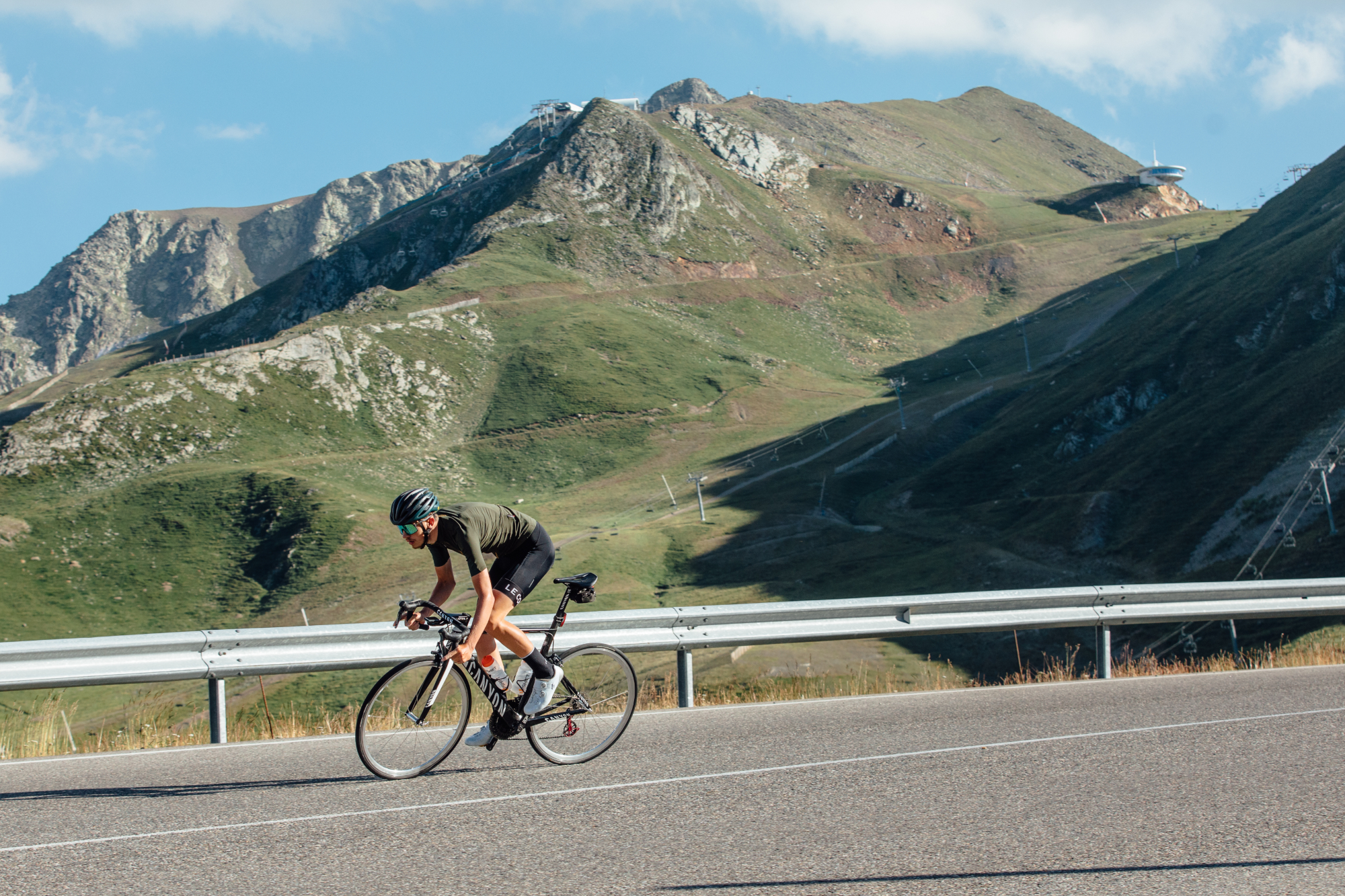
Researchers also showed that heat adaptation training can increase power output at lactate threshold, reduce lactate concentration during exercise and spare your body’s glycogen stores in subsequent exercise. There’s no firm consensus on how hot the heat training environment needs to be, nor how long each session should be, but studies used one to two hours of moderate-intensity exercise at ambient temperatures above 30ºC.
For Faulkner, the main benefit of heat adaptation training comes from raising your core temperature by 1.5ºC for at least 60-90 minutes each day. “Ideally you should do this daily for 10-15 days until a few days before your target race. Having a hot bath or sauna post-training augments the adaptations,” he explains.
If you can’t travel to a hot country before your race, the alternative is to simulate the conditions by wearing extra clothing while training in warm UK weather before immersing yourself in a hot bath (40ºC) for 45 minutes. A 2018 study showed that piling on extra layers in a temperate environment provides most – but not all – of the same physiological stimuli as training in a hot environment. Alternatively, doing your indoor training in a warm room without a fan, having regular saunas, doing hot yoga sessions and even hot baths will aid heat adaptation in your body – anything that raises your core temperature.
How do you know whether you are heat adapted? “Your resting and exercise heart rate will be lower for the same power output, and you’ll start sweating earlier in your session or at a lower ambient temperature,” says Faulkner. “You’ll also not feel quite as hot, and your relative perception of effort will be lower.” Once you’ve done your heat adaptation training, you can expect a significant performance benefit. A study by Danish researchers showed a 16% improvement in 43.4km TT performance in the heat following two weeks of acclimatisation.
More metrics
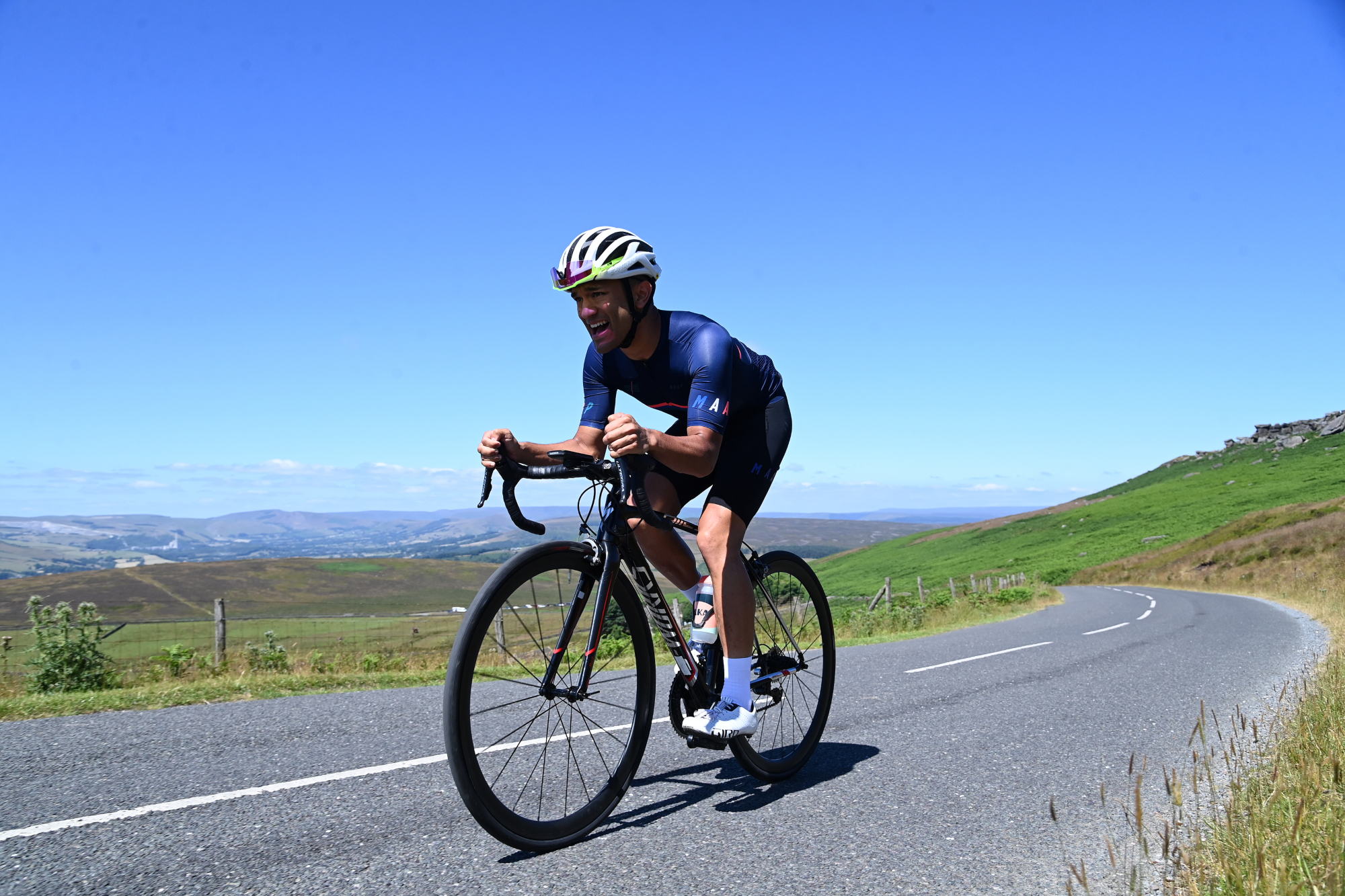
To take the guesswork out of heat training, some pro teams have started using Core body temperature sensors. These are small electrodes that are taped to the chest and use a thermal energy-transfer sensor to estimate core body temperature.
A former performance nutritionist with the team, James Moran, explains: “We found them to be most useful in training and preparation for the heat to educate riders around when their body temperature was elevated and for how long.” Was this additional data useful? “It was good to have a value or visual trend to see when riders were getting hot and then over time seeing the progressive change in temperature responses from heat sessions,” says Moran, who now works with the Uno-X Pro Cycling team. “In races, it wasn’t really a metric the riders would use on the bike. As one rider said, ‘we’re racing – we can’t slow down just because a sensor is telling us we’re getting hot’.”
Core claims that its sensors are accurate to within 0.3°C, but independent testing paints a different picture. A 2021 study by Swedish and Slovenian researchers showed the device was reliable from workout to workout when comparing to itself, but the accuracy of the device was outside the predefined threshold of <0.3°C when compared to a rectal thermometer.
Faulkner recently compared the measurements from the Core sensor with those from a pill sensor (a more direct measurement of core temperature). He found good correlation between measurements during warmups and steady state rides but less so when intensity was more varied.
Can the Core device be used to prevent heatstroke or heat exhaustion? “Likely not,” says Dylan Dahlquist, senior performance research lead for Herman Miller Gaming and former sport scientist for Red Bull. Dahlquist tested the device with cyclists in both indoor and outdoor settings and simulated race conditions. “Although the hype was real, we ended up not using it much in the long run given its finickiness and issues losing data when exercise intensity increased.”
So, is it worth investing in? “I’d say it’s useful for telling you whether your temperature has gone up by the critical 1-1.5ºC, for heat training purposes, but I would not advise using it in a race to dictate your pacing,” says Faulkner. Moran agrees: “We prefer to use other surrogate markers of heat acclimation, such as sweat rate, heart rate, perceptual ratings, time accrued in environmental conditions deemed sufficient to elicit a heat acclimation response. In racing situations, we use methods to try to reduce the physiological stress of heat – hydration, cooling vests etc – and monitor individual rider responses.”
Quick guide to staying hydrated
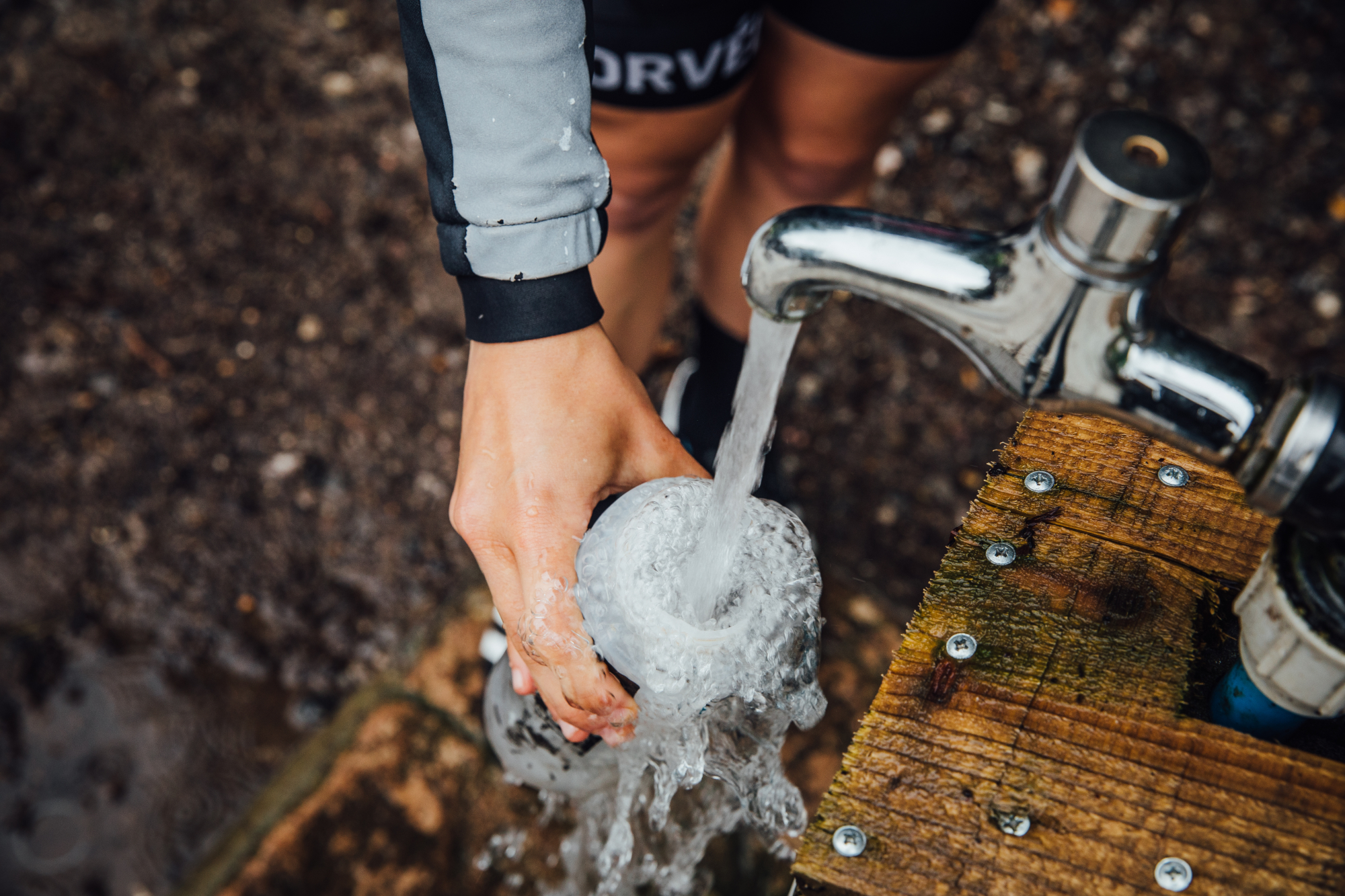
Dehydration is a key factor in heat related illness. “Staying hydrated helps your body sweat so will help lower your core temperature,” explains Dr James. “Ideally, you should drink enough so that you keep your fluid loss below 2% body weight. That’s equivalent to a weight loss of 1.4kg for a 70kg cyclist.”
For rides of under two hours, where sweat losses are relatively small, James advises drinking to thirst – this will prevent dehydration while also ruling out the risk of hyponatraemia from drinking too much. However, where potential sweat losses are high, you may need to be more proactive in your drinking strategy to avoid becoming dehydrated. In humid environments, James recommends drinking cool fluids, as they help bring down core temperature, whereas in hot dry environments, where more heat can be lost through sweating, you’re better off with ambient drinks, as cold drinks may reduce sweating.
Drink at regular intervals but do not force yourself to drink. Drinking excessively can lead to hyponatraemia, a potentially life threatening condition where sodium levels in the blood fall abnormally low, eventually leading to vomiting, fatigue, headache and confusion. “Hyponatraemia is less common in cyclists than marathon runners but can occur during sportives or events where there are lots of water stations,” warns James.
There’s no denying that exercising in the heat is tough. If you know you’ll be competing in hot, humid conditions, preparing for it by doing heat adaptation training is a worthwhile strategy and will almost certainly help you cope and perform better.
For my occasional warm rides cycling up Box Hill, just once or twice a year, it’s unlikely to make much difference – heat training would be a step too far. Instead, I’m planning to pace myself better (start slower!), drink more water before the start of the climb (to minimise dehydration) and, if it’s not too humid, save a bidon to pour over my head, should things get really roasty before I reach the top.
Can electrolyte drinks aid your cycling performance in the heat?
“Although you lose electrolytes in sweat, you don’t need to replace them during rides of less than two hours,” says Dr Lewis James. “You have enough sodium in your body to replenish sweat losses. By taking extra sodium in tablets, you could be pushing your overall salt intake too high.”
So who needs supplementary electrolytes? “In my experience, only cyclists sustaining heavy sweat losses, for example during long rides or races of longer than two hours are likely to see any benefit. But even then, the benefit is on longer-term sodium balance, not performance in any single event.” It is a good idea to replace sodium after exercise, though most of us have plentiful salt in our regular daily diet to cover these needs.
Riders who suffer from cramps when cycling during long, hot rides, sportives or races often blame poor hydration or lack of electrolytes. However, recent studies have indicated that this isn’t always the case, and the exact reason for cramping is still unknown.
Should you wear a base layer on hot days?
According to sports scientist Dr Steve Faulkner, any thermodynamic advantage of even the best base layers is lost on hot days. “I’d advise against wearing a base layer in hot weather. It increases your insulation and reduces your ability to dissipate heat,” says Faulkner. “The only exception would be for time trials where its aerodynamic benefits would outweigh the drawback of heat insulation.”
Is it worth doing a sweat test?
If you do a lot of riding in hot conditions, sweat testing may help you formulate your hydration strategy. There are two types of test: sweat rate and sweat composition.
“Sweat rate tests measure your sweat volume by calculating the difference between your pre and post ride weight, and are most reliable when conducted in the environment in which you plan to race,” says Dr Lewis James. “Sweat composition testing provides a rough idea whether your fluid and sodium losses are high, medium or low.”
That said, your sweat composition varies according to body sodium levels and hydration status – which is why James says it’s best to measure in race-relevant conditions.

Thank you for reading 20 articles this month* Join now for unlimited access
Enjoy your first month for just £1 / $1 / €1
*Read 5 free articles per month without a subscription

Join now for unlimited access
Try first month for just £1 / $1 / €1

Anita Bean is an award-winning registered nutritionist, internationally published author, health writer and former British bodybuilding champion. She specialises in sport and exercise nutrition and is passionate about helping athletes improve their performance in training and competition. She is the author of The Complete Guide to Sports Nutrition and The Vegan Athlete’s Cookbook and has written for Good Housekeeping, Waitrose Food and Women’s Running. Anita is also the nutritionist for RideLondon and the London Marathon. A strong advocate of an active lifestyle, Anita enjoys cycling, yoga, hiking and strength training.
-
 Trek, State and Specialized raise bike prices while other brands limit US releases — Is this just the beginning?
Trek, State and Specialized raise bike prices while other brands limit US releases — Is this just the beginning?As tariffs hit, the bike industry is forced to adapt, whether through price increases, limited releases, or a restructuring of supply chains
By Anne-Marije Rook
-
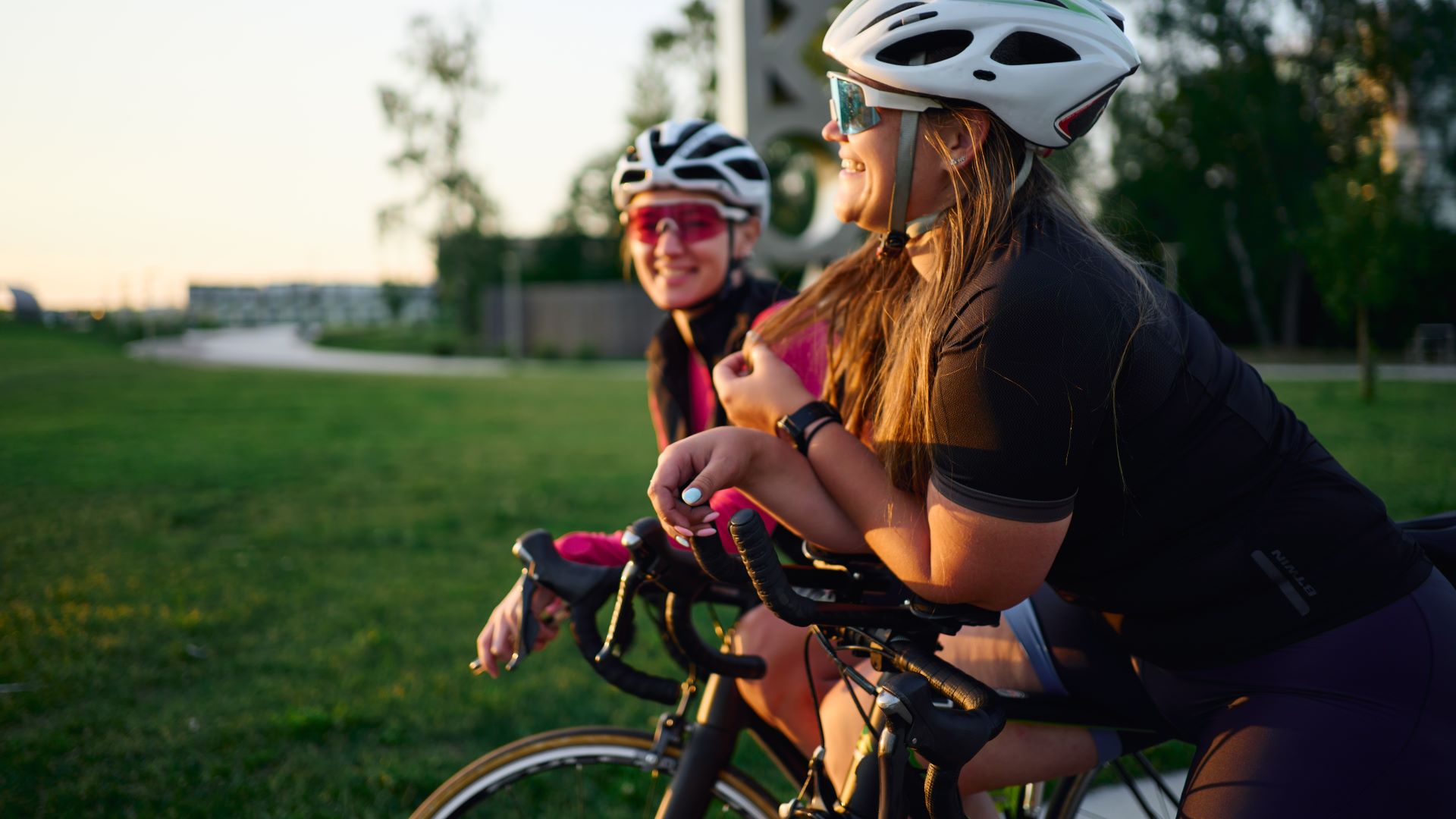 How I got my non-cyclist friend hooked on riding bikes — and how you can, too
How I got my non-cyclist friend hooked on riding bikes — and how you can, tooWith a little bit of gentle guidance, “bikes aren’t my thing” can turn into “when’s our next ride?”
By Marley Blonsky